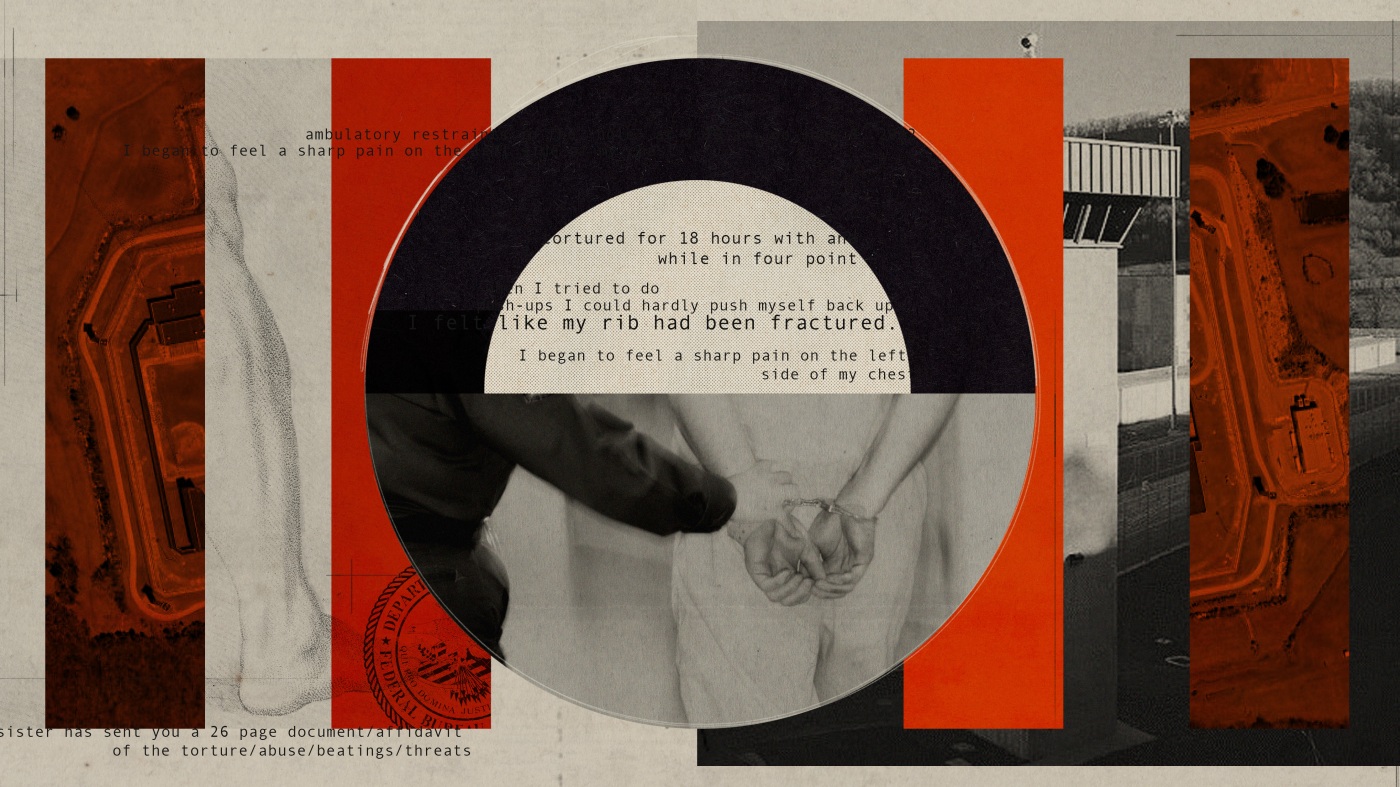Marcos Santiago, an inmate at Lee federal prison in Virginia, described horrific abuse he experienced and witnessed at the hands of prison guards. Locked in isolation, Santiago heard the sounds of other inmates being shackled to concrete slabs and left for hours with open wounds and broken ribs. He described a culture of racism and violence in the prison’s Special Housing Unit, where inmates are locked down for nearly 24 hours a day.
Santiago documented the abuse he witnessed, even after returning to the general prison population. He gathered names of inmates who had been shackled and beaten, as well as those who had heard their screams. Lawsuits examined by The Marshall Project and NPR revealed allegations of officers smashing faces into walls, breaking teeth, kicking and groping inmates, and more.
Santiago, who has been in prison for 22 years, expressed his rage at the abuse he endured. He filed a lawsuit against federal prison officials in January 2023. The Bureau of Prisons spokesperson declined to comment on the accusations, citing ongoing lawsuits. The president of the officers’ union at Lee did not provide a comment for the story.
The Marshall Project reviewed 17 federal lawsuits and interviewed over two dozen individuals familiar with the situation at Lee prison. Nine lawsuits, including one from Santiago, were filed with assistance from the Washington Lawyers’ Committee for Civil Rights and Urban Affairs and Gilbert LLP, a law firm based in D.C. Despite promises from federal officials to address mistreatment in all Bureau of Prisons facilities, the violence at the prison has persisted, as reported by lawyers representing the prisoners.
Marcos Santiago, along with others, found themselves in shackles around the same time a reform-minded director, Colette Peters, was appointed by the bureau. Peters has expressed a commitment to addressing employee misconduct and increasing resources to investigate abuse. Complaints at USP Lee echo similar stories from USP Thomson, particularly regarding the excessive use of four-point restraints. Following an investigation by The Marshall Project and NPR, which revealed abuse and violence in Thomson’s Special Management Unit, the bureau closed the unit in February 2023. The Justice Department’s inspector general is currently investigating the use of restraints in all federal prisons.
According to Kristin McGough, who previously led the prisoners’ rights team at the Washington Lawyers’ Committee, the abuse at Lee is widely known and lacks attempts to conceal it. Bureau policy stipulates that restraints should be a last resort for individuals posing a threat, and that force should be limited to what is necessary for subduing an inmate. However, testimonies and lawsuits indicate that officers in Lee’s Special Housing Unit routinely violated these policies by subjecting individuals to brutal treatment, including physical assault with fists and shields after being restrained in various ways. Some prisoners at Lee were restrained by being chained to concrete slabs, while others were given protective headgear or paper clothing under specific circumstances. Former inmates reported difficulty speaking out about abuse due to fear of retaliation, with officers obstructing their access to grievance forms or intentionally delaying paperwork. Inmates must follow the prison’s grievance process before suing, creating an additional legal obstacle for those seeking justice.
One former inmate, Santiago, believes his attempts to file grievances and lawsuits made him a target for further abuse. He mentioned that officers tried to prevent him from documenting his experiences, so he started sending copies of forms to his sister as a precaution. In a lawsuit filed by Santiago, prison staff denied the allegations made against them, arguing that proper administrative procedures were not followed.
Prisoners at Lee reported being targeted by staff for various reasons, including past sex offenses or minor interactions such as requesting medical assistance. One inmate, Ryan Amelia, experienced a traumatic episode at Lee after being denied medication, resulting in him being restrained in four-point restraints and subjected to physical abuse by officers. Upon release, Amelia had wounds on his wrists and ankles, causing weakness in his limbs. Medical records indicate that he began to lose weight and developed a large ulcer on his left ankle. Two months later, he was hospitalized for severe pain and a large bump on his hip. Doctors found that the infection in his ankle had spread to his joints, causing septic arthritis. Despite multiple surgeries, the infection remains in his bone, requiring him to take antibiotics for life and rendering him unable to walk again.
In a phone call from another prison, he expressed his fear that the infection could be fatal if it entered his bloodstream. He now relies on his cellmate for daily tasks and experiences constant pain. He has been recommended for transfer to a federal medical facility due to his condition.
He filed a lawsuit in October, but there has been no response from the Bureau of Prisons. He believes the guards should be held accountable for their actions and the consequences he now faces.
The U.S. Penitentiary Lee, located in Appalachia, has a predominantly white population in both the town and the prison staff. Black prisoners have reported facing racial hostility and abuse from guards, including the use of racial slurs and physical violence. One former inmate described his experience as traumatic and expressed his hope that no one else would have to endure what he went through.
Another inmate recounted being targeted and physically assaulted by staff after protesting the decision to turn off news coverage of protests over George Floyd’s murder. He was subjected to racial slurs and violence, leading to a lawsuit that was ultimately dismissed for not following proper grievance procedures. He emphasized the lasting impact of the abuse he endured while incarcerated. Nelson emphasized that it is against bureau policy for officers to use offensive language or mistreat incarcerated individuals. Many incidents of violence occurred in areas without cameras, or where cameras were covered up. Nurses at Lee are required to record medical assessments of restrained prisoners, but inmates reported being coerced by officers to report no injuries on camera.
Some prisoners at Lee said they were subjected to abuse and threats, with some even experiencing sexual assault. Official complaints under the Prison Rape Elimination Act were filed, but none were substantiated. Additionally, there have been instances of violence between cellmates, leading to deaths at Lee.
One lawsuit alleges that after being released from restraints, a prisoner was beaten by his cellmate at the encouragement of officers. The abuse continued for two weeks until the victim lost consciousness.
Source link














